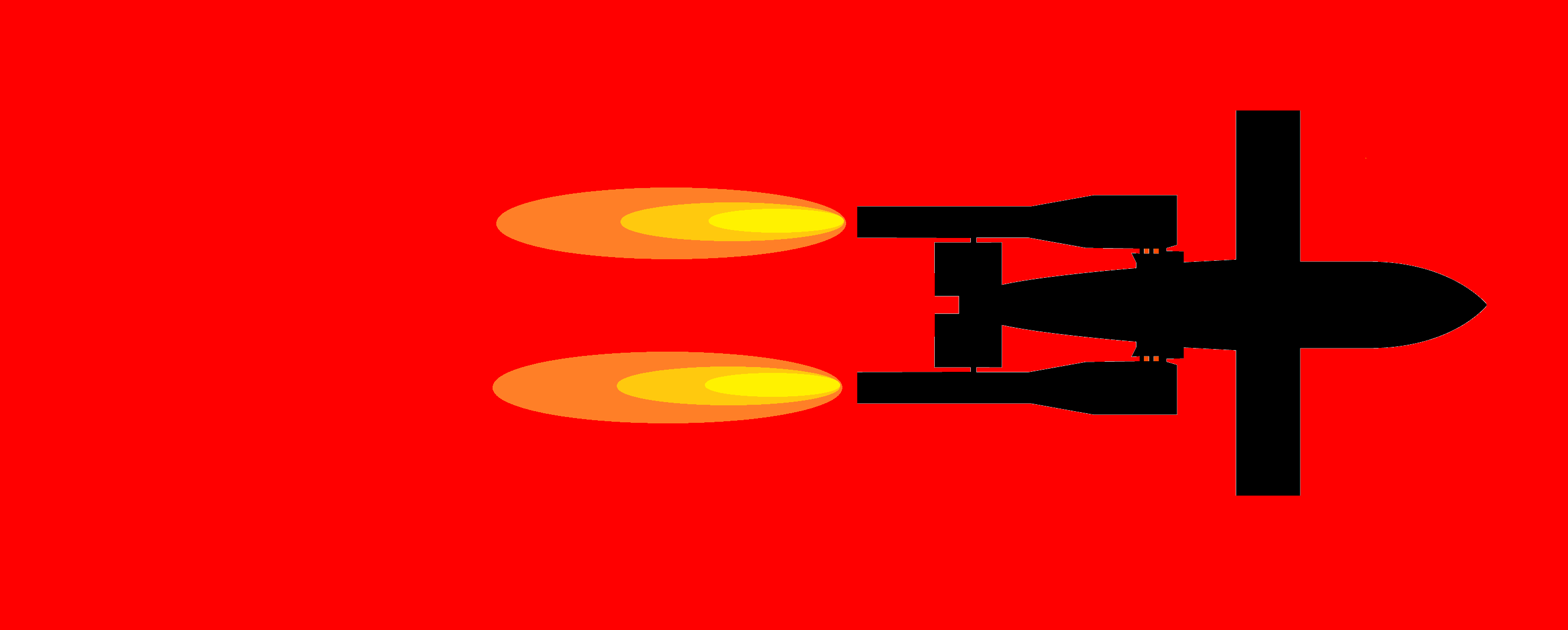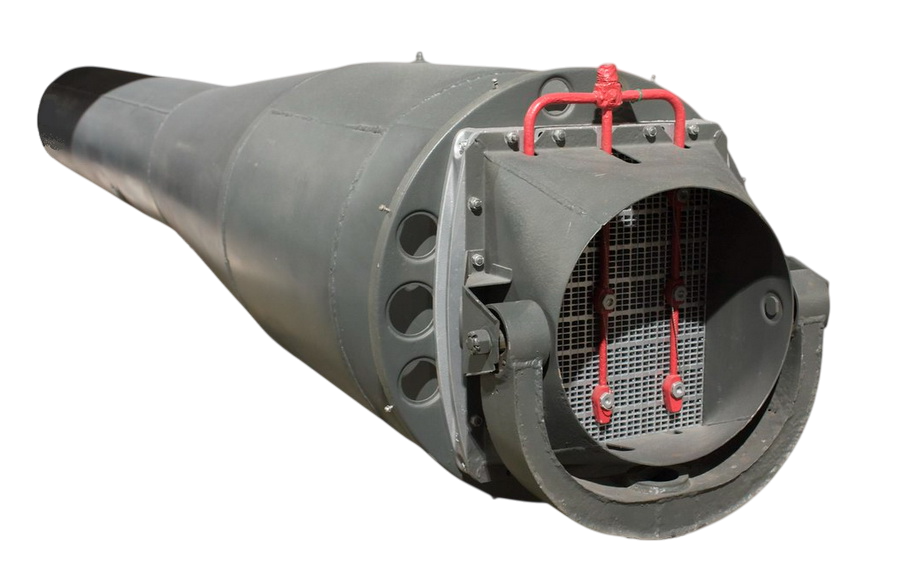
Some results of modeling using the Pulsejet-Sim program
What does our program give? Why did we even go through all this trouble? Maybe we don't need it at all, this program, and it's better to continue the old-fashioned way of clicking on the calculator, cutting stainless steel sheets and welding them?
Let's try to figure it out...
First, let's see what interesting things can be obtained using our program. To do this, select any engine option from those that are by default, for example, the Solar PJ32 engine with a resonance tube diameter of 165 mm, and start a parametric study using the corresponding button.
Select the engine parameter for which we will conduct research - for example, the same length of the resonance tube. Determine its limits, for example, from 500 to 2000 mm, and start the calculation. After receiving the diagrams, collect those that we like and get this picture:
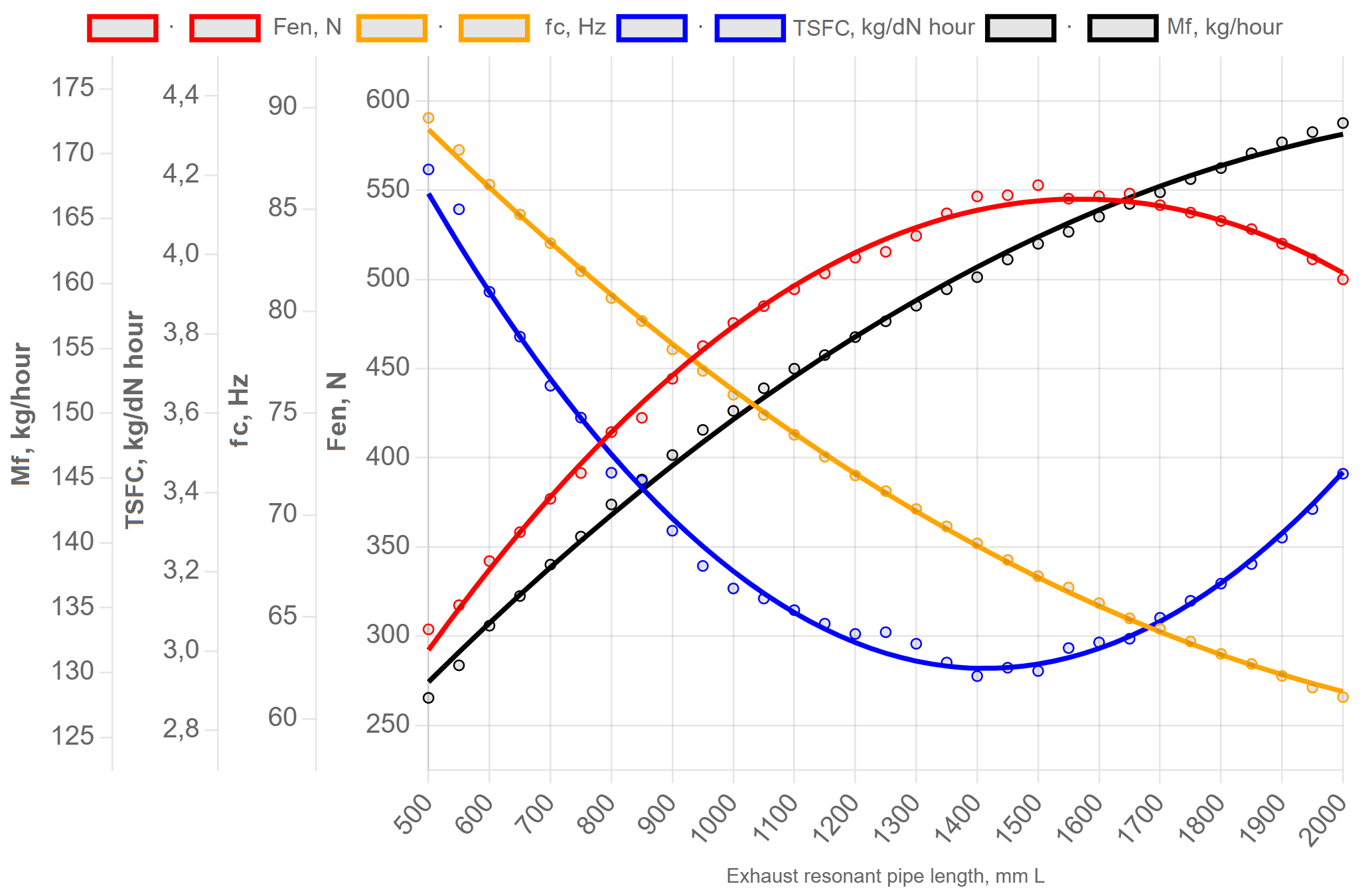

Dependence of engine parameters on the length of the resonance pipe: Mf – fuel consumption, TSFC – specific fuel consumption, fc - cycle frequency, Fen - thrust
Let's see what we got.
So, it turns out that this engine's maximum thrust is provided not by any pipe length, but by a strictly defined one. The program gives the optimum length for thrust in the area of 1400-1500 mm. But since fuel consumption continuously increases with increasing pipe length, the best efficiency, i.e. minimum specific fuel consumption, is achieved with a slightly shorter pipe length - 1300-1400 mm.
In fact, our program will not give 100% accuracy, and it is possible that these optimal pipe lengths for thrust and specific fuel consumption will be slightly different. But - they will definitely be. Therefore, attention, the question: how much stainless steel sheets should be sawed and how much welding wire and gas should be spent on welding, as well as the time to find out these lengths? Will a week be enough? Or two? And the program will give it in a few seconds - let's feel the difference?
For more advanced users, the program allows you to extract more serious data about the engine process itself. For example:
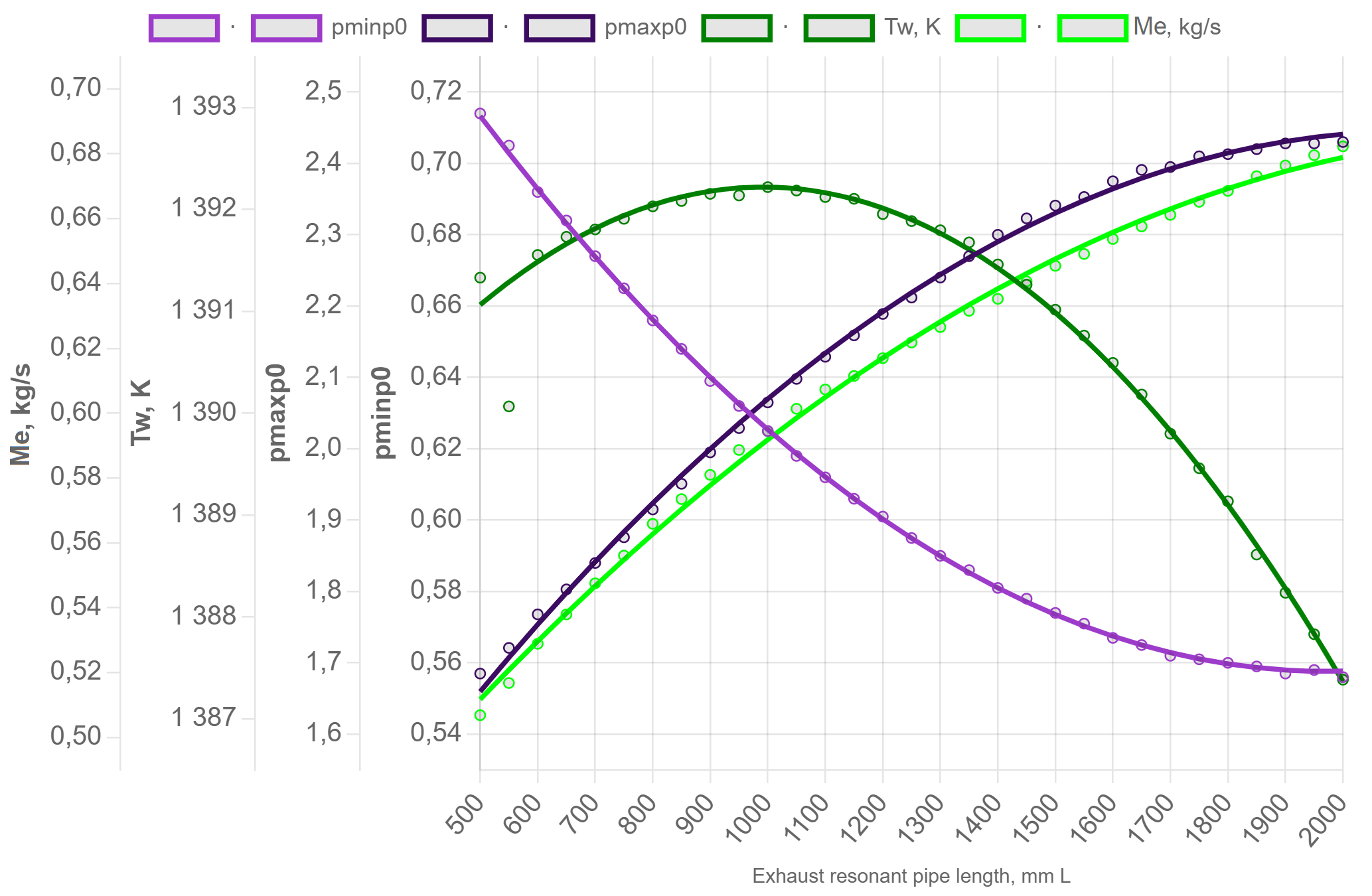

Dependence of engine parameters on the length of the resonance pipe: Mf - air flow, Tw - wall temperature, pmaxp0 - maximum cycle pressure, pminp0 - minimum cycle pressure
Here you can see how the maximum pressure in the cycle increases along the length of the pipe while the minimum pressure decreases. That is, the amplitude of gas oscillations in the pipe increases, which causes an increase in air flow and even wall temperature. There are also other parameters that specialists can load onto the diagram during their own special studies.
But the main advantage of the modeling compared to cutting and welding is not only the quick and easy determination of engine optimal dimensions. Modeling can also easily give results that cutting and welding cannot achieve at all. For example:
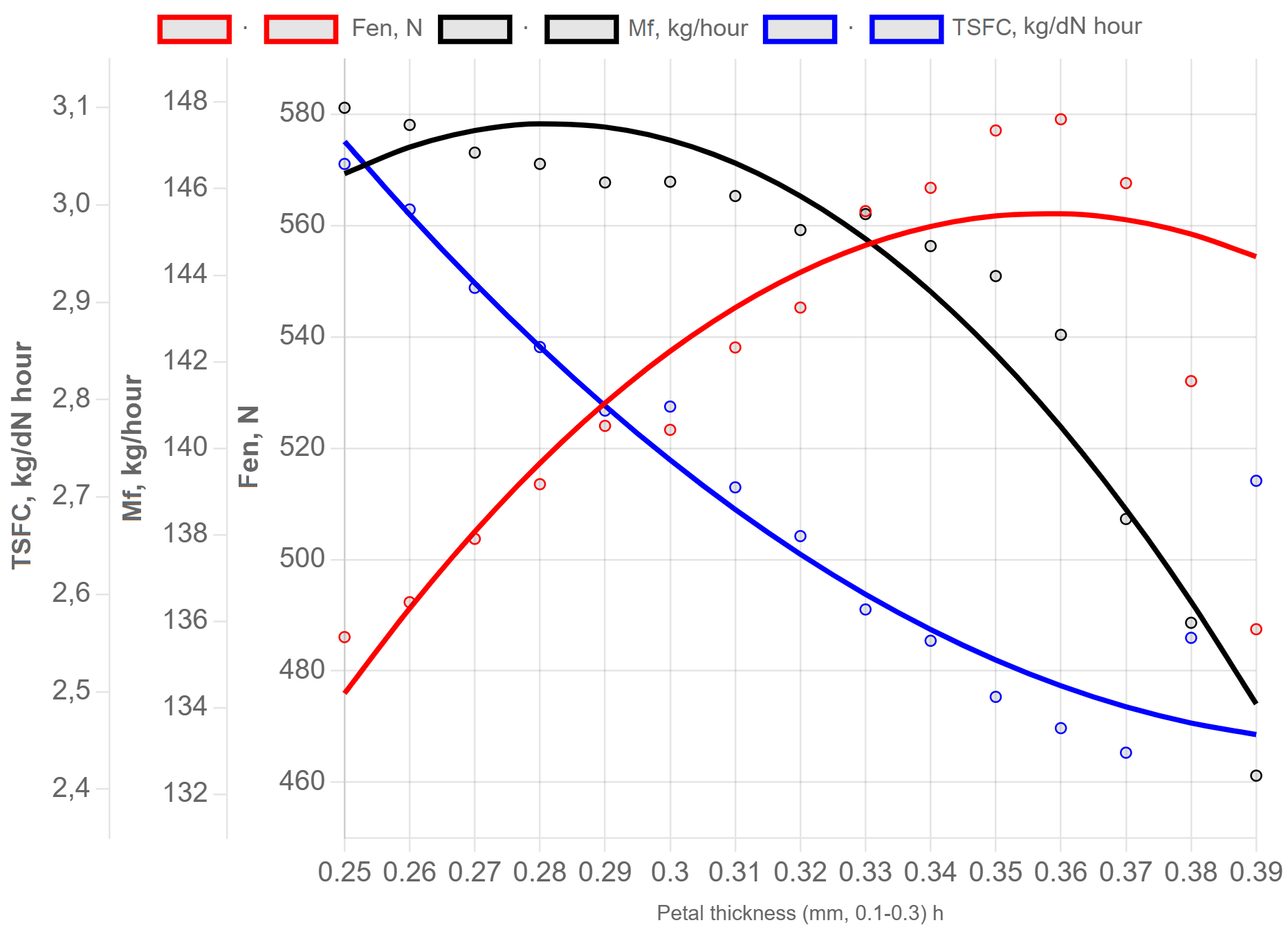

Dependence of engine parameters on the valve petal thickness: Mf – fuel consumption, TSFC – specific fuel consumption, Fen - thrust
Despite the obvious truth that the thinner the petal, the better, in fact, the program gives the optimal petal thickness. And it is different for different grid designs. For example, for a wedge grid it is about 0.30-0.35 mm, but for a straight one it can be 0.20 mm. Perhaps the real design can work somewhat differently, but we have no doubt that in general a similar dependence takes place.
But the most interesting thing comes when it is necessary to study the performance characteristics of a pulse jet engine. Here, no cutter or welding will help. For example, the speed characteristic of a pulse jet engine - and this is our complete know-how, is easily obtained using parametric studies, which are easily carried out using the program:
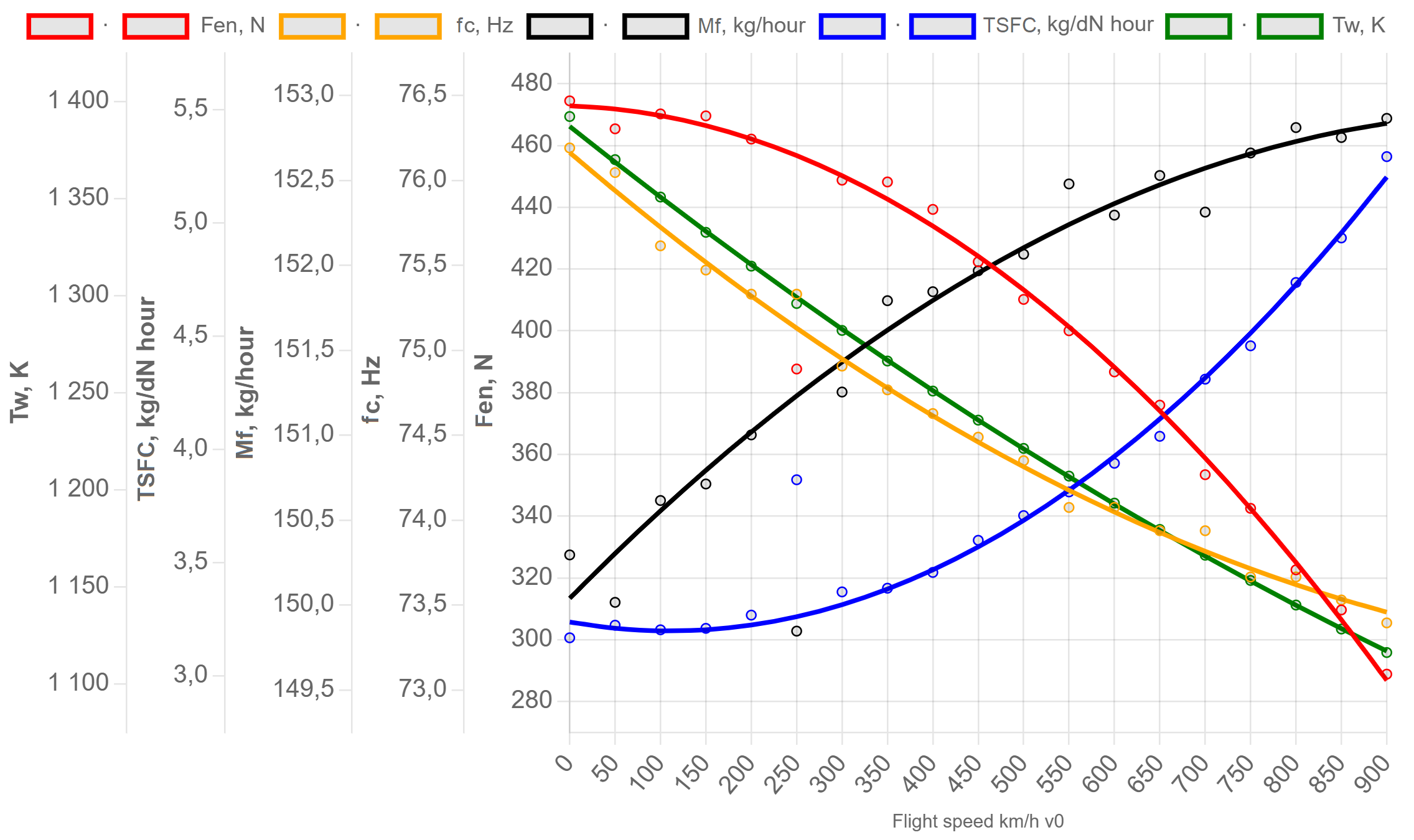

Speed characteristic of pulse jet engine: Tw - wall temperature, Mf – fuel consumption, TSFC – specific fuel consumption, fc - cycle frequency, Fen - thrust
In the speed characteristic we can see that despite the claims of great scientists that the valves of pulse jet engine is “squeezed” by the oncoming air flow and engine “degenerates”, in reality nothing of the sort happens, although at a speed of 800 km/h the thrust does indeed drop by 30% relative to the thrust at a standstill. At the same time, fuel consumption increases slightly, and the frequency of cycles drops slightly too. Interestingly, the wall temperature drops significantly, by 300C – the air blowing does its job.
With the speed characteristic of the engine, it is possible to match the engine with the aircraft and determine all the characteristics of the aircraft, including its maximum speed. Of course, none of this can ever be done with a cutter and/or a welding.
But the most interesting thing is that with the help of our program you can even compare the characteristics of a valved and valveless engines. We have carried out such a study for engines with a pipe diameter of 140 mm:
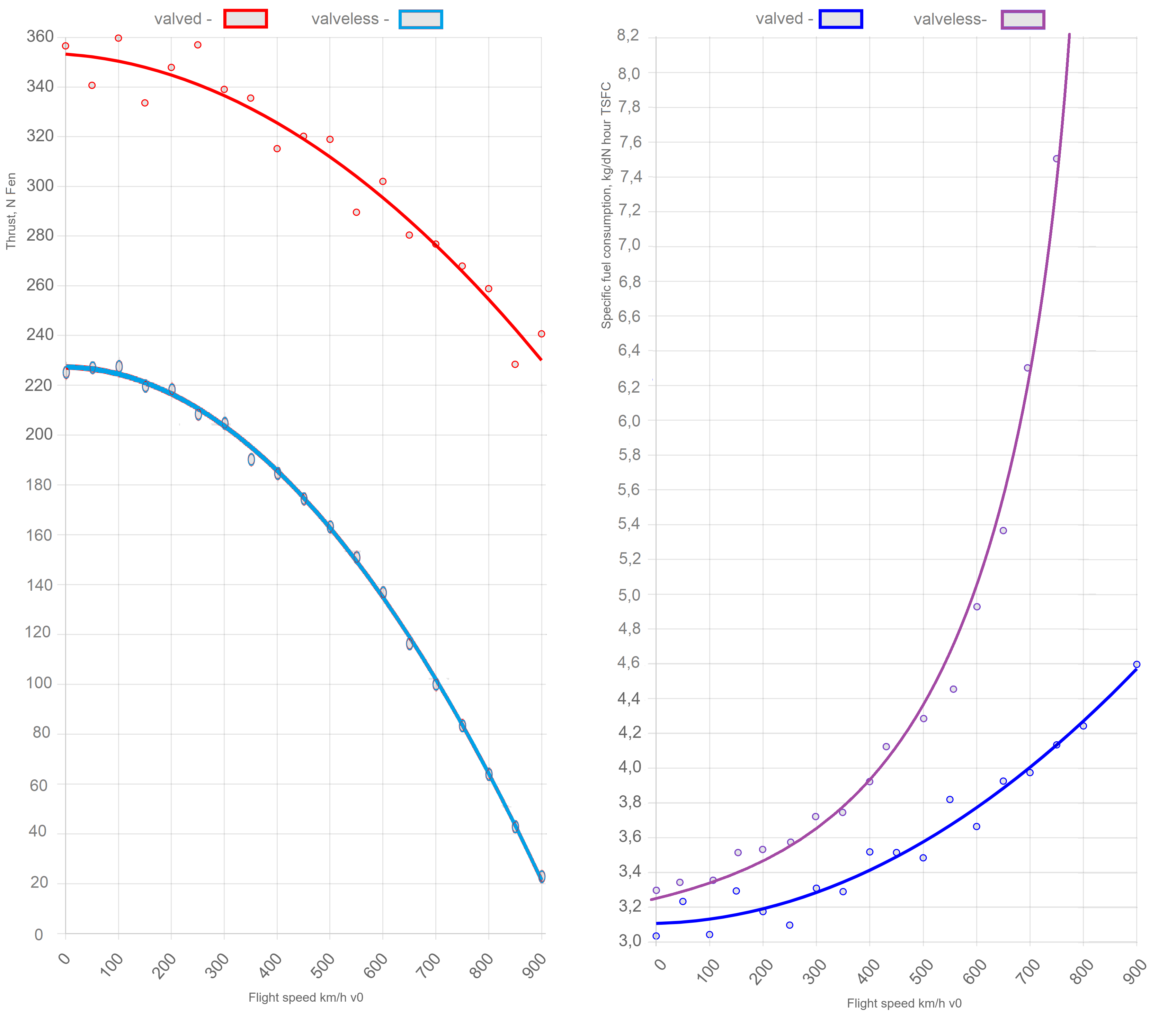

Comparison of the speed characteristics of valved and valveless engines in terms of thrust (left) and specific fuel consumption (right)
This is an absolutely unique result, which completely overturns all popular misconceptions about a valveless engine being better than a valved engine because the valves are short-lived.
What do we see on the diagram? We see a complete disaster in a valveless engine, namely:
1. The thrust at a standstill, all other things being equal, in a valveless engine is 30% lower than in a valved engine.
2. With such low thrust, the valveless engine has too much drag, as a result of which this reduced thrust also catastrophically drops with flight speed.
3. In fact, a valveless engine does not allow for UAV to fly at a speed of over 400 km/h
4. At the same time, it has a catastrophically high specific fuel consumption, 20-30% or more higher than the specific fuel consumption of a valved engine. As a result, the absence of valves does not provide any advantage - an UAV with a valveless engine cannot fly for a long time due to excessive fuel consumption, and also will not fly far due to low flight speed.
5. On the contrary, a valved engine feels quite good even at speeds of 800-900 km / h, and has quite acceptable fuel consumption at these speeds.
Our conclusions, unfortunately, are completely disappointing for the many fans of valveless engines:
1. Valveless pulsejets are not suitable for high-speed UAVs at all.
2. It is unclear for what purpose the projects of valveless engines of different companies were made, but definitely not for aviation.
3. Projects of air targets with valveless engines are poorly suited even for targets, because during short flights, artillerymen and missilemen may not have enough time to aim.
4. The main advantage of a valveless engine - the absence of the valves - is not really an advantage, since the excessively high fuel consumption and rapid drop in thrust with speed do not allow this advantage to be realized in practice.
5. UAV projects with a valveless engine are ineffective, do not provide high-speed flight, and due to excessive fuel consumption cannot be implemented with a UAV flight range of over 150 km. A valveless engine is suitable mainly only for demonstration launches in your own garage - its use on aircraft is ineffective. In other words, a valveless pipe is not actually for an aircraft engine.
6. The classic valved pulse jet engine made in Germany 80 years ago remains an unattainable leader in technology - German doctors-professors Diedrich, Gosslau, Zobel, Schulz-Grunow, as well as the inventor Herr Schmidt himself made a thing that no one has been able to surpass.
7. High-speed UAVs with a valved pulse jet engine with a flight range of up to 300-350 km at a speed of up to 800-900 km/h can be quite realistic in the case of mass production. And it should be valved pulse jet engine only
That's it is our program Pulsejet-Sim. And we've only touched on the tip of the iceberg. The rest can be done instead of us by all interested users, and for now, completely free of charge.
